THE SINGERS TOOLKIT
An Incomplete Guide for Baffled Choral Singers
Staves
Notes are written on a STAFF or STAVE.
 This shows whether they are high or low.
This shows whether they are high or low.
 Notes can be written on the lines or in the spaces.
Notes can be written on the lines or in the spaces.
Very high or low notes are written on LEGER LINES.

Return to:
TOP
MENU PAGE of Singers Toolkit
MENU PAGE of Organists Online
Lines or Systems
Several staves may be performed at the same time. They are then grouped together with a bracket
 or a brace:
or a brace:
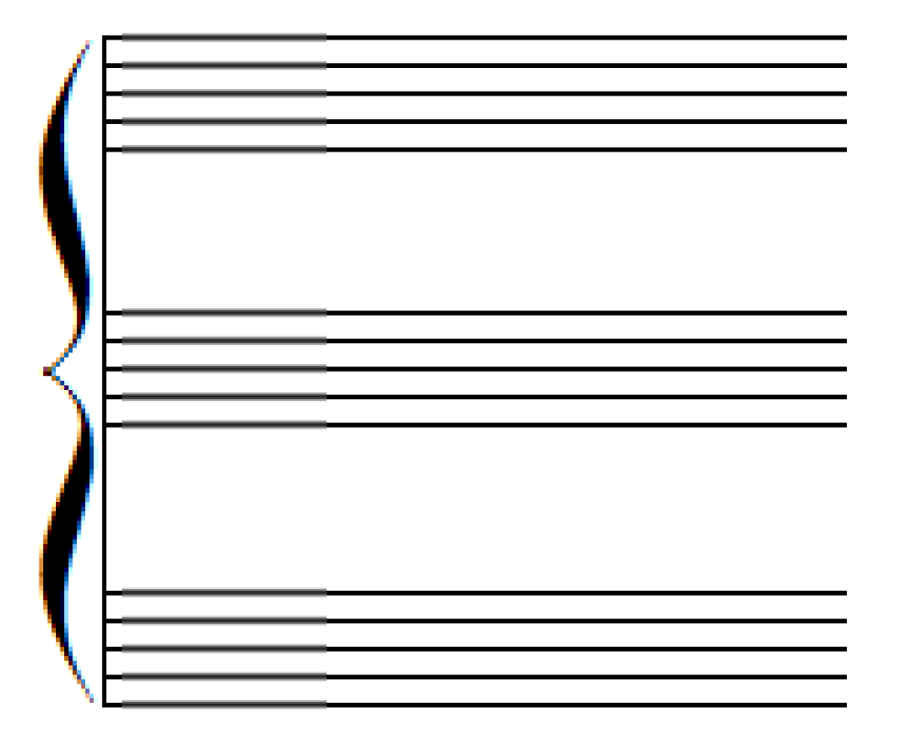 at the left margin. A group of staves is commonly called a LINE (GB) or SYSTEM (US). or
at the left margin. A group of staves is commonly called a LINE (GB) or SYSTEM (US). or
Return to:
TOP
MENU PAGE of Singers Toolkit
MENU PAGE of Organists Online
Voices on Staves
The most common division of voices in a choir is:
Soprano
High, usually women or children
Alto
Lower, usually women and children, and some men
Tenor
Lower Still, usually men, and some women
Bass
Lowest, men
These maybe subdivided.
Soprano 1
Higher
Soprano 2
Lower
And, of course, the other voices may be similarly subdivided.
The voices are commonly assigned to a 4-stave line or system like this:
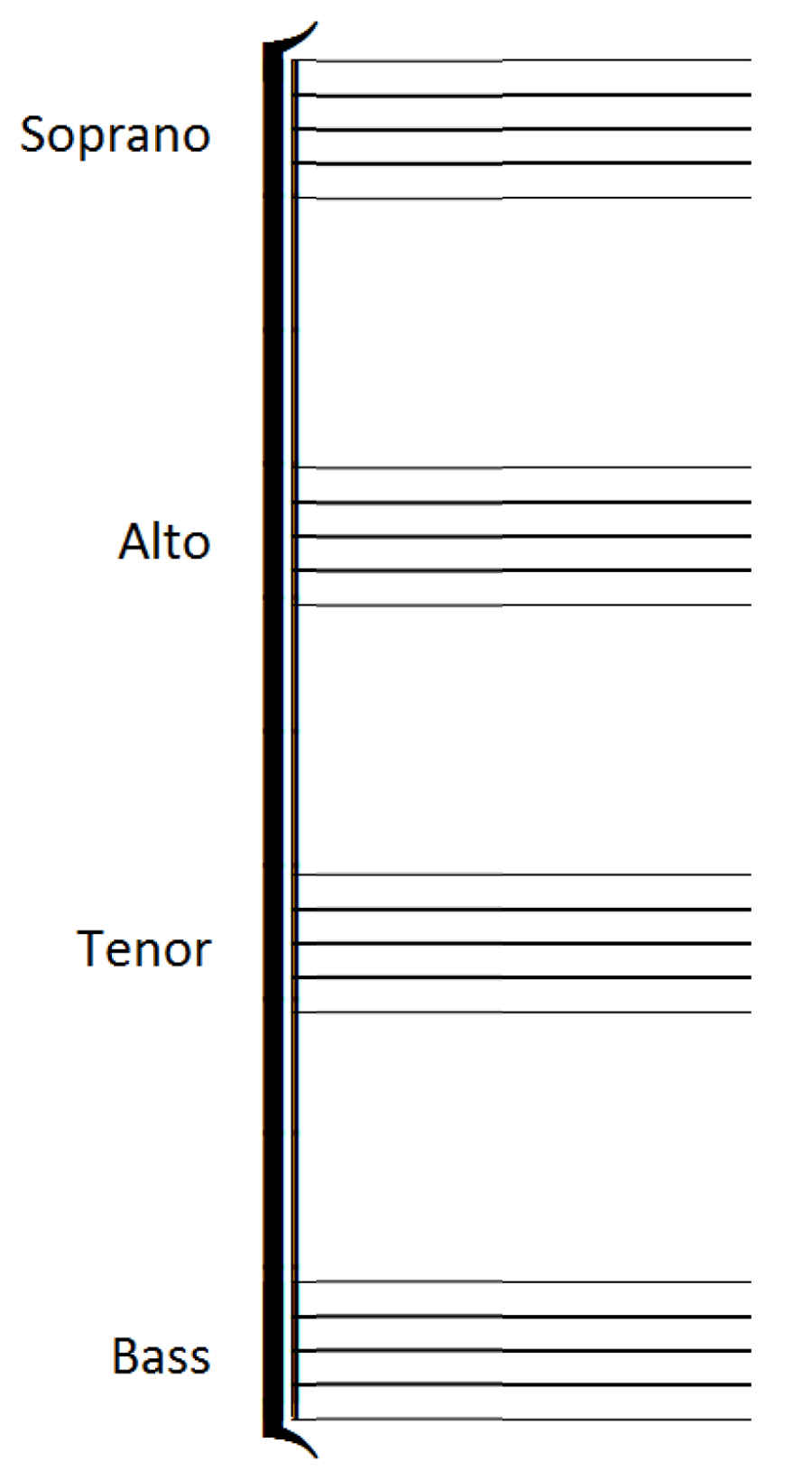 Often, an accompaniment part for a piano is also part of the line or system:
Often, an accompaniment part for a piano is also part of the line or system:
 Sometimes, to save space, the Sopranos and the Altos, and the Tenors and the Basses share a stave. Then, if the note TAILS
point upwards, they are Soprano or Tenor notes, and if the tails point downwards, they are Alto or Bass notes.
Sometimes, to save space, the Sopranos and the Altos, and the Tenors and the Basses share a stave. Then, if the note TAILS
point upwards, they are Soprano or Tenor notes, and if the tails point downwards, they are Alto or Bass notes.
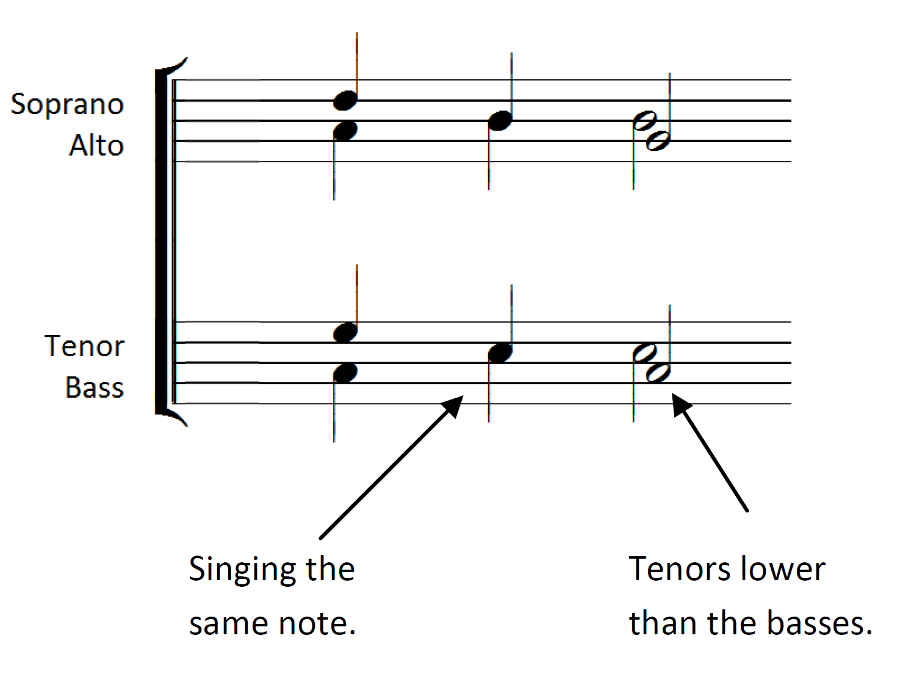
Return to:
TOP
MENU PAGE of Singers Toolkit
MENU PAGE of Organists Online
Bars, Barlines, and Repeats
On a stave, BARLINES divide it into smaller units. The gap between two barlines is called a BAR.
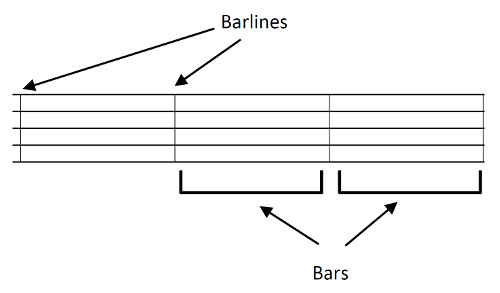
To mark the end of an important section of a piece, a
THIN DOUBLE BARLINE is sometimes used:

At the end of a piece, a
THICK DOUBLE BARLINE is used.

Bars between
REPEAT MARKS are sung twice, thus:
1, 2, 3, 4, 1,2,3,4

Watch a video HERE
Sometimes, there are different endings for the first time a section is sung (
1ST TIME BAR)
and the second time it is sung (
2ND TIME BAR). It is performed thus:
1, 2, 3, 1, 2, 4
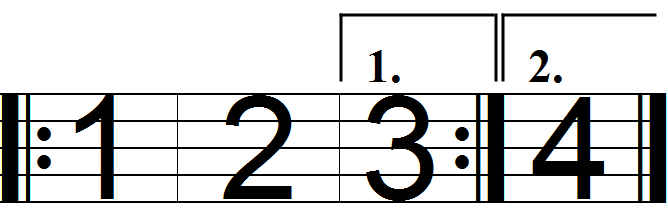
Watch a video HERE
DC al Fine means Return to the beginning and sing to Fine, thus:
1, 2, 3, 4, 1, 2

Watch a video HERE
DS al Fine means Return to the Distinctive Sign and sing to Fine, thus:
1, 2, 3, 4, 2, 3

Watch a video HERE
Here is a more complex example

To analyse this:
- Sing bars 1 and 2 (this is the first time round):
- Sing bar 3 (there's a 1 in the bracket and a repeat sign.
- Sing bars 1 and 2 again (this is the second time round, so this time);
- sing bar 4 (there's a 2 in the bracket).
- Continue to bars 5, 6, 7, and 8. As the end of bar 8, D.S al Fine says go back to the distinctive sign and follow through to Fine, so;
- sing bar 2 again (this is for the third time), so
- jump to bar 4 (there's a 3 in the bracket) and finish.
In other words:
1, 2, 3, 1, 2, 4, 5, 6, 7, 8, 2, 4.
Watch a video HERE
It's easy to become confused by a multitude of repeats, first and second time bars, DCs and DSs etc, and even experienced singers can lose their way, but it saves space on the page and, possibly,
lots of page turning.
NB!!! NB!!! NB!!! NB!!!
By counting pages, lines, bars and beats, you can orientate yourself exactly on a page.
Click HERE to see a simple example.
For a more complex example, click HERE.
Return to:
TOP
MENU PAGE of Singers Toolkit
MENU PAGE of Organists Online